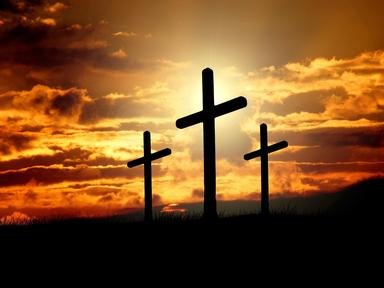Quiz Answer Key and Fun Facts
1. The principal patron saint of Ireland is, of course, St. Patrick; where in Ireland was he born?
2. This female religious was once even more venerated in Ireland than St. Patrick. She was known as the "Virgin Mary of the Gael", since the veneration paid her was matched only by that shown to the mother of God. Born in 450 near Dundalk, Louth, she met St. Patrick when he baptized her parents; they eventually became close friends. In about 470, she founded a double monastery at Kildare and became its abbess. She is buried alongside Patrick at Downpatrick. What is her name?
3. This 6th century Irish monastic is one of the three patron saints of Ireland. He was born in Donegal in 521 of parents who were of royal descent. He founded numerous monasteries, including the one at Kells, famous for its illuminated manuscripts. He travelled to Iona, off the coast of Scotland and founded a monastery which would become one of the greatest in Christendom. Who is he?
4. St. Ita was born in Waterford of royal lineage; when she reached marriageable age, she asked her father to allow her to become a nun instead. She founded a monastery in Limerick, as well as a boys' school. St. Ita is also known by this name, which is also the name of a legendary Irish heroine.
5. This 6th century monk is one of the most celebrated of Irish saints. Among his many achievements, he is believed to have possibly traveled to America some 900 years before Columbus. Who is he?
6. St. Dymphna is the patron saint of the mentally ill, epileptics, and those suffering from demonic possession. According to her legend, she was an Irish princess whose father began to display an incestuous interest in her following the death of her mother. To escape his attentions, she fled with her confessor, St. Gerebernus, and two companions. They settled in another country and founded an oratory, living as hermits. Eventually, Dymphna's father tracked them down and had Gerebernus and the two companions executed; he himself beheaded Dymphna when she refused to return with him. The site of the martyrs' graves eventually became the scene of numerous cures of people suffering from insanity and other nervous and/or mental afflictions. In what European country is Dymphna buried?
7. St. Gall was a 7th century monk and evangelist who is considered the apostle of this European country, where the celebrated monastery bearing his name became known as a center of medieval culture and learning.
8. Innumerable Irish Catholic boys (and men) bear the name of this 7th century monk, who was of royal descent, was said to have lived to the age of 120, and who is also known as Coemgen.
9. This Irish monk is the patron of gardeners and of cabdrivers (Parisian taxicabs are named for him). He is also invoked against venereal disease. Who is he?
10. St. Aidan, also known as Maedoc, was a 7th century monk who built a monastery at Ferns, in county Wexford, and was eventually ordained as bishop of Wexford. He seems to have been the Irish equivalent of St. Francis of Assisi in his love and concern for animals. Which animal is his usual symbol in art?
11. St. Kilian was a 7th century bishop and martyr who evangelized this German-speaking region, of which he is the official patron saint.
12. This 12th century archbishop of Armagh was a friend of St. Bernard of Clairvaux, in whose arms he died in 1146. Bernard declared him a saint at his funeral mass and the church formally approved his cult in 1190. He was the first Irish saint to be formally canonized. Ironically, he is best known for a series of spurious "prophecies" attributed to him which purports to foretell the history of the papacy from 1144 until "the end of time". Who is he?
13. St. Lawrence O'Toole was archbishop of Dublin in the latter half of the 12th century. During his tenure, the beginning of the "troubles" which were to afflict the Irish people for the next several hundred years, began with the subjugation of Ireland to English rule. Under which English sovereign, best known for his clashes with St. Thomas Becket, did Lawrence serve?
14. St. Oliver Plunkett was archbishop of Armagh in the mid 17th century; he was arrested and, ultimately, executed for alleged complicity in a plot against Charles II. What was the name of this plot?
15. Matt Talbot, though he has not been formally canonized as of 2004, has long been venerated as the patron saint of alcoholics. In what Irish city, which also gave us Oscar Wilde, George Bernard Shaw, and James joyce, was Talbot born?
Source: Author
jouen58
This quiz was reviewed by FunTrivia editor
fringe before going online.
Any errors found in FunTrivia content are routinely corrected through our feedback system.
